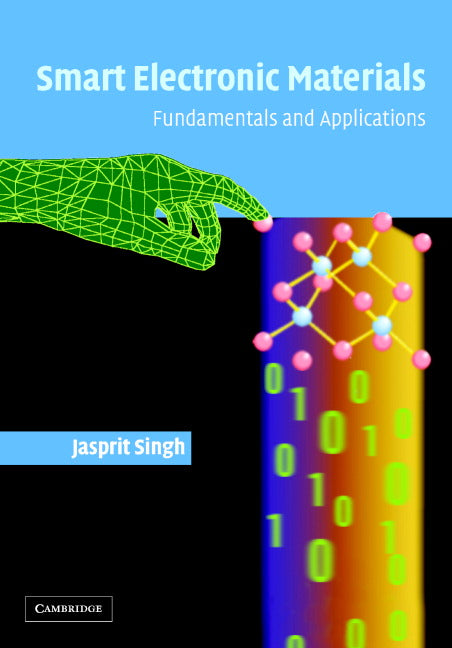Freshly Printed - allow 8 days lead
Couldn't load pickup availability
Smart Electronic Materials
Fundamentals and Applications
This graduate text explains the physical properties and applications of a wide range of smart materials.
Jasprit Singh (Author)
9780521850278, Cambridge University Press
Hardback, published 3 March 2005
432 pages, 193 b/w illus. 43 tables 143 exercises
25.3 x 18 x 2.5 cm, 1.044 kg
Smart Electronic Materials is a valuable guide for instructors who want to design their own courses on smart materials...mostly succeeds in its aim of offering readers basic skills to understand properties of diverse materials relevant in today's information-technology-based society."
Siegfried Bauer, Physics Today
Smart materials respond rapidly to external stimuli to alter their physical properties. They are used in devices that are driving advances in modern information technology and have applications in electronics, optoelectronics, sensors, memories and other areas. This book fully explains the physical properties of these materials, including semiconductors, dielectrics, ferroelectrics, ferromagnetics and organic polymers. Fundamental concepts are consistently connected to their real-world applications. It covers structural issues, electronic properties, transport properties, polarization-related properties and magnetic properties of a wide range of smart materials. The book contains carefully chosen worked examples to convey important concepts and has many end-of-chapter problems. It is written for first year graduate students in electrical engineering, materials science or applied physics programs. It is also an invaluable book for engineers working in industry or research laboratories. A solution manual and a set of useful viewgraphs are also available for instructors.
Preface
Introduction
1. Structural properties
2. Quantum mechanics and electronic levels
3. Electronic levels in solids
4. Charge transport
5. Light absorption and emission
6. Dielectric reponse: polarization effects
7. Optical modulation and switching
8. Magnetic effects in solids
A. Important properties of semiconductors
B. P-N diode: a summary
C. Fermi golden rule
D. Lattice vibrations and phonons
E. Defect scattering and mobility
Index.
Subject Areas: Electrical engineering [THR], Materials science [TGM], Applied physics [PHV]


